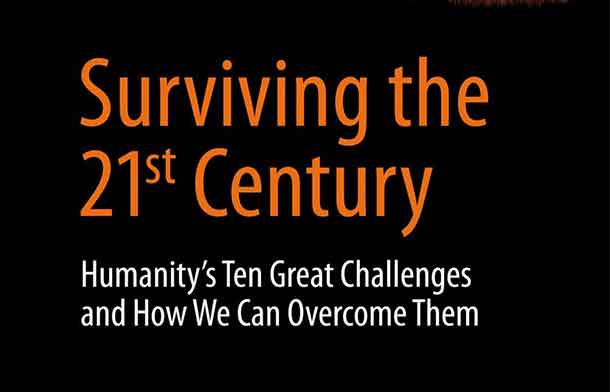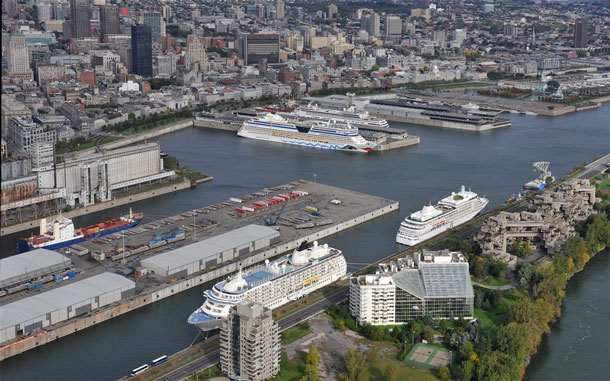
THUNDER BAY – ENVIRONMENT – “Surviving the 21st Century” is a powerful new book exploring the main risks facing humanity: ecological collapse, resource depletion, weapons of mass destruction, climate change, global poisoning, food crises, population and urban overexpansion, pandemic disease, dangerous new technologies and self-delusion – and what can and should be done to limit them.
The world faces an acute water crisis within ten years, affecting food supplies, megacities and industry globally, a leading science writer has warned.
“World water use is already more than ten trillion tonnes a year. While the human population has tripled since 1950, our water use has grown sixfold,” says Julian Cribb, author of ‘Surviving the 21st Century’ (Springer International 2017). The book focusses on the ten greatest threats to the human future – one of which is resource scarcity – and what we can do about them.
“Rising demand from megacities, mining, agriculture and the fossil fuels sector in particular is combining with climate change to threaten major water scarcities across the world’s subtropical, arid and semi-arid regions. When this affects the food supply there will be vast migrations of people – like the world has never seen before.”
Mr Cribb says that scientific studies show:
• groundwater is running out in practically every country in the world where it is used to grow food, posing risks to food security in northern India, northern China, Central Asia, the central and western US, and the Middle East. Most of this groundwater will take thousands of years to replenish.
• the icepack on high mountain chains is shrinking, emptying the rivers it once fed in practically every continent.
• around the world, large lakes are drying up, especially in Central Asia, China, sub-Saharan Africa and the South American Andes.
• 50,000 dams break up the world’s rivers, sparking increased disputes over water between neighbouring countries
• most of the world’s large rivers are badly polluted with chemicals, nutrients and sediment.
Major Cities are at Risk
“The water crisis is sneaking up on humanity unawares. People turn on the tap and assume clean, safe water will always flow. But the reality is that supplies are already critical for 4 billion people – over half the world’s population. During times of drought, megacities like Sao Paulo, La Paz, Los Angeles, Santiago, 32 Indian cities and 400 Chinese cities are now at risk.”
Among world leaders, Pope Francis recently warned that we could be moving toward “a major world war for water”. He deliberately altered his prepared speech to issue this caveat when addressing an international seminar on the human right to water, hosted by the Vatican’s Pontifical Academy of Sciences on Feb. 23 and 24, 2017.
Each of the last three UN secretaries-general – Ban Ki-Moon, Kofi Annan and Boutros Boutros-Ghali – has warned of the dangers of world water scarcity and of ‘water wars’ in the future. The world’s leading scientific journal, Nature, issued a sobering warning of water scarcity under climate change in December 2013.
“Other than in water circles, these warnings seem to have passed largely unheeded by governments and the population at large,” Cribb says. “The sense of urgency necessary to prevent a world water crisis is not there.”
“Especially overlooked is the impact of water scarcity on the world food supply. As cities and energy corporations combine to rob farmers of the water needed to grow crops, the global irrigation sector is stagnating at a time when it needs to double food output to meet rising global demand for food. This will directly impact the availability and price of food to city people everywhere.
“We commonly assume that the natural hydrological cycle of evaporation and rainfall means there will always be ample water. In reality, we pollute and misuse water so badly, it is often not safe for drinking, domestic use or food production. Meanwhile rainfall, effluent and wastewater in most cities is wasted or discharged to the ocean.
“The average citizen of Planet Earth uses 1,386 tonnes of water per year, and the demand continues to rise every year, stressing supplies in many cases to their limits,” Cribb says.
A study by NASA (2015) shows that a third of the world’s major groundwater basins are stressed, and people are using the water without knowing when it will run out.
A timeline maintained by Professor Peter Gleick of the World Water Institute reveals the increasing frequency and tempo of disputes and conflicts over water globally.
“The evidence points to serious trouble for the world over water within the next ten years. The world focus of attention has been on climate – rightly so, as it is an integral factor in water scarcity – but the massive water crises that will disrupt food supplies and dislodge huge populations are much closer than other climate impacts. Present policy does not reflect this.”
Mr Cribb says it is time to put world water science, technology and management on a war footing, if the crises are to be averted. “Currently humans spend US$1.8 trillion a year on new weapons. If we spent a tenth of that on clean water technologies, fixing leaky supplies, recycling city water, measuring availability, agricultural water efficiency, effective water markets and controlling demand we could avoid the conflicts which the Pope and UN heads foresee.
“Current evidence suggests most countries prefer war to water.”





